Hey there, Sports Fans! Welcome to Goonhammer’s inaugural coverage of everyone’s favorite fantasy football game: Blood Bowl! With the new edition going up for pre-order last weekend, we wanted to get the word out to those who might be interested in diving into one of Games Workshop’s most accessible games.
If you’re a new coach or are Blood Bowl-curious, read on! Stick with Goonhammer in the coming days for more Blood Bowl coverage, including our New Edition Roundtable!
What is Blood Bowl?
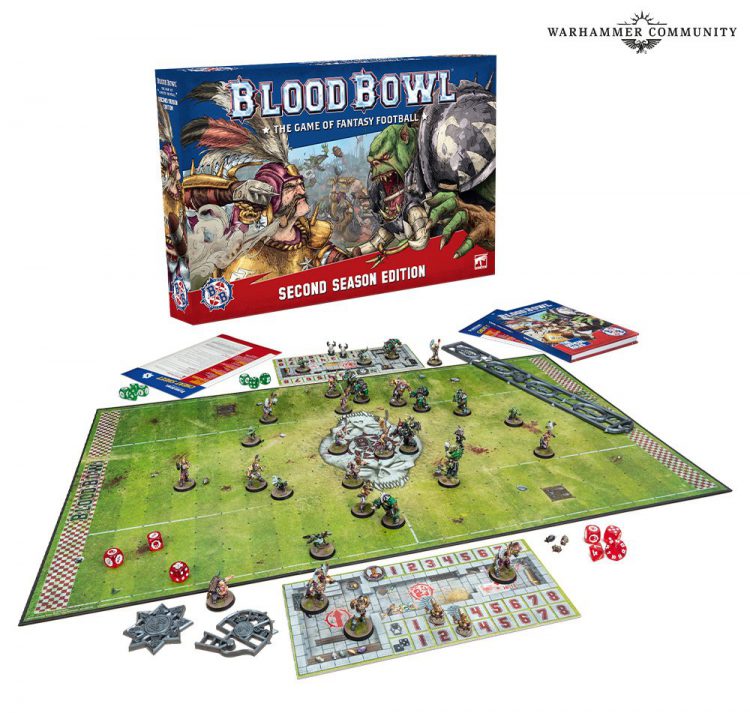
Do you like football or rugby? Have you ever thought, “This sport is cool or whatever, but I really want to see a psychotic goblin saw an elf in half with a chainsaw.” Well, dear Sports Fan, then Blood Bowl is for you! Blood Bowl is a fast-paced, easy-to-learn, but difficult-to-master turn-based tabletop game that pits a small team of fantasy trope players against a roughly equal opposing team on a pitch (or field). It uses specialized dice, custom measuring tools and templates, and poses a tactical and strategic challenge that takes up less time than a game of Warhammer, but still has a ton of the complexity and fun of its parent setting.
Blood Bowl has all of the classic Warhammer Fantasy factions: Humans, Orcs, Elves (all 4 types!), Dwarves, Undead, Skaven, Chaos, Lizardmen, Goblins, and even Halflings! There is something for everyone in Blood Bowl. Do you want a team that pummels its way down the field, wreaking havoc in its wake? Pick up a Chaos Chosen team and watch heads roll (or get smashed)! Do you want to play a team that’s agile, fast, and a legit scoring threat on just about any turn? Then grab some Wood Elves, and resist the urge to smugly say “scoreboard” every five seconds of every game!
The History
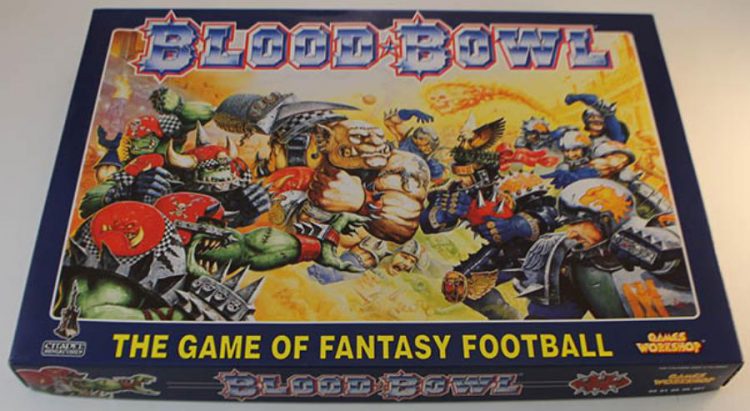
Blood Bowl is the original tabletop fantasy football game, first released in 1986 and created by Jervis Johnson. It is a very loose parody of American Football, incorporating elements of classic fantasy settings like elves, orcs, and dwarves. Since 1986, Blood Bowl got an update in 1994 to include plastic miniatures and a starter box that came with dice and a pitch (a field to us Americans), and then received no official updates until 2016. There was a thriving online community of enthusiasts who kept the game going during that 22-year period, but for more than two decades, Blood Bowl seemed forgotten.
Then, in 2016, GW decided to renew its support of its only sports-themed game and released a new starter box and a whole slew of plastic teams to go with it. Despite all the updated models, for the most part, GW didn’t do much to the rules, and that brings us to the present day!
With a new edition, GW has changed the rules significantly for the first time since 1994. This is great news! With the game staying static for so long, some complacency and staleness were to be expected. This also gives newer coaches a chance to jump into the mix and immediately make waves, as the dust on the new ruleset is far from settled.
The point is, you ought to give Blood Bowl a try! Any game that not only stayed alive, but thrived for 22 unsupported years is worth a shot, and we just know that you’ll enjoy it!
Why Play Blood Bowl?

Blood Bowl is easily the most unique game that Games Workshop produces, and you will not get a similar experience anywhere else in the GW catalog. Additionally, Blood Bowl is the second-most accessible game to play from GW, behind only Warhammer Underworlds. All you need is a team of 16 or fewer players, a flat pitch, and a handful of dice!
It’s also one of the best story-generating games on the market – each and every roll of the dice brings with it some incredible tension, and whether you’re telling your friends about the time your Orc Blitzer dodged a few tackles to push through your opponent’s defense to carry the ball to the end zone and your team to victory, or that time your Skaven Gutter Runner pushed itself just a bit too far, tripped on the goal line, broke its neck, and died, you’ll quickly find yourself with a slew of stories of last-turn heroics and heartbreaks that anyone would envy.
The most charming thing about Blood Bowl, however, is the sense of fun surrounding it. 40k and AoS can be very dark and dreary in tone, but Blood Bowl’s setting is light-hearted and carefree! That being said, it’s still got the violence and action we’ve come to expect from a Games Workshop product, but it’s couched in the atmosphere of an exciting sporting event, rather than the fate of the Mortal Realms.
Finally, Blood Bowl is the only GW product that directly continues the Warhammer Fantasy setting that many, many people still love. There’s none of the fancy, easily copyrighted terms that are so familiar in Age of Sigmar these days! We’re talkin’ Orcs, Elves, Dwarves, Goblins, and Ogres! If you look back fondly on what was once called the Old World, then Blood Bowl is certainly for you!
What do you need to play?
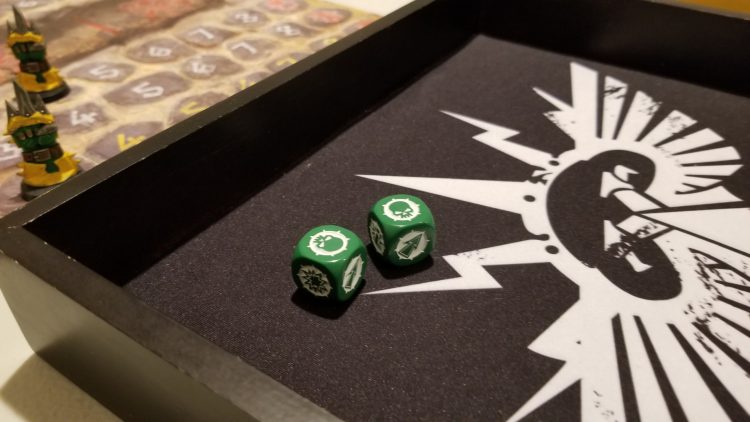
Blood Bowl is phenomenally accessible with one of the lowest barriers to entry of any of Games Workshop’s games. If you and your friends are coming at this completely fresh, you’ll want to pick up the starter set. The Second Season box set contains everything you and a friend need to play your first game, including two teams, a pitch (the game board), a couple of balls, rulers and templates, and plenty of dice to assist you in fully experiencing the blessings of Nuffle at the most inopportune moments.
But what if you don’t want to play Imperial Nobles or Black Orcs? In that case, you’re going to need to buy a team. Fortunately, team boxes are relatively inexpensive, with a single $40 team box offering everything you need to hit the field, and a second box giving you a deep bench to draw from that’ll generally be enough to play an entire league from start to finish. You’ll also want to invest in the rules for your team – these can be found either in the Teams of Legend document available for download on Warhammer Community, or collected in the Blood Bowl Second Season Rulebook, that can be bought separately from the boxed set. As new teams get released, their rules will come out in a Spike! Magazine alongside the new minis, which generally costs less than $20 US, and comes with a ton of cool background, art, and tactics.
More developed leagues might want to pick up a few extras – the Star Players on offer from Games Workshop and Forge World provide some additional elements to make your games more interesting, but the complete rules for running a league are included in the Second Season Rulebook.
All in all, if you’re hobbying on a budget, Blood Bowl is an excellent way to scratch that hobby itch. A team box is $40 and completely playable for every faction, if not totally optimized, and a set of dice and a rulebook will come in under $50, letting you experience the game for around $100, which cannot be said about any of the other games that Games Workshop produces!
How to Play Blood Bowl
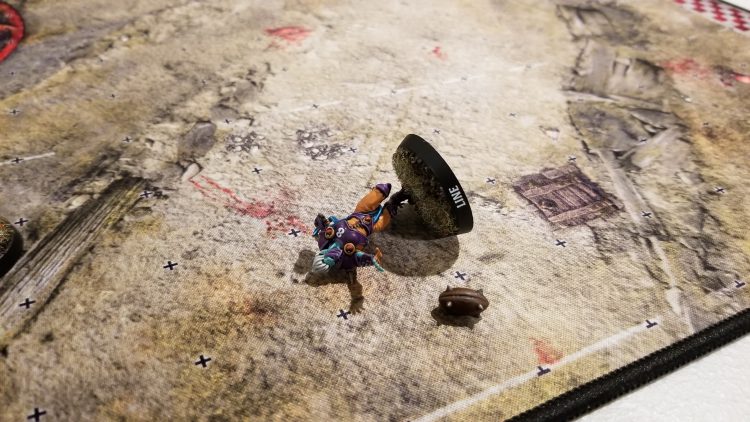
So, you’ve got your team, your dice, an opponent, and a pitch, how do you actually do this thing?! Well, the complete rules are available in the rule book, but we’ll break it down broadly here.
Blood Bowl has 8 turns per coach, a quick halftime, and then another 8 turns per coach. Each turn will generally take less than 5 minutes, though for newer coachs it may take longer. Experienced Blood Bowl coaches can finish a game in about 60 minutes, but most contests will last around 90 minutes or less. The game starts with a kick-off, and progresses until a team scores or the half runs out of turns. The time period from kick-off to score or end-of-half is called a Drive.
At its core, Blood Bowl is a risk management game. Every action that involves a dice roll can be failed, and if you fail, your turn is over, and your opponent gets to take their turn. This is called a Turnover, and it is absolutely central to how the game is played. Fortunately, there is a system of Skills and Rerolls in place that will allow coaches to mitigate risk as they navigate their turn. However, it is always good practice to start your turn with the least risky activities, and work your way up to riskier activities as your turn progresses.
Each player on your team can perform one action during their turn:
- Move
- Block
- Blitz (move + block, one Blitz per turn per team)
- Foul (move and then attack a downed coach, one Foul per turn per team)
- Pass (one per turn per team)
- Hand Off (One per turn per team)
- Use a Skill (which will be defined on their profile)
Once every coach on your team has either activated or declined to activate, your turn is over.
Blocks and Blitzes are executed by rolling special d6s called Block Dice. Instead of pips, they have symbols on them to represent what happens during the Block action. Not to get too granular, but little explosion symbols (or “pows” as we call them) are good, and skulls are bad. Players that are involved in Blocks or Blitzes can get knocked out or injured as a result of that dice roll, and may or may not come back to the game in later drives. So, later turns tend to go a lot quicker as teams lose coaches to injury or death during the course of the game.
While most of the fun of Blood Bowl lies in beating the crap out of your opponent’s team, the object of the game is, of course, to score Touchdowns. At the end of the game, the coach with the most Touchdowns wins! Draws are perfectly acceptable results in a game of Blood Bowl, as a Draw usually represents a very close-fought contest full of nail-biting action and extremely pivotal dice rolls!
Creating a Team
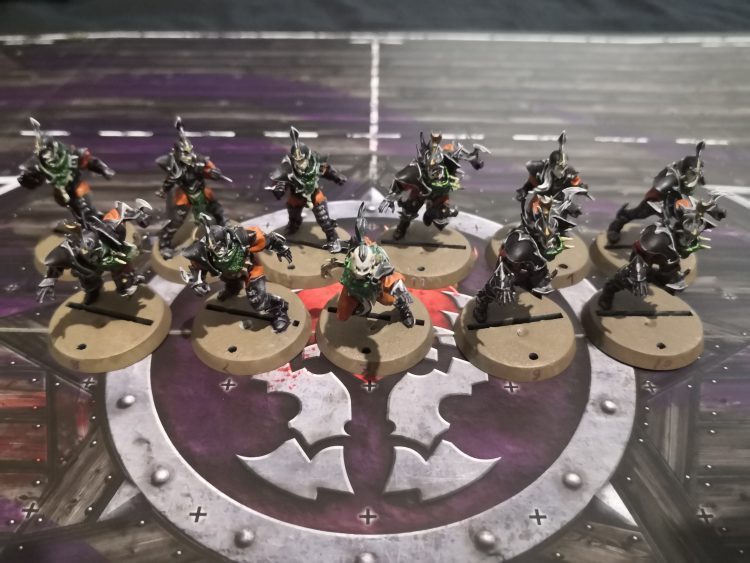
Teams are built with gold pieces (gp), which are Blood Bowl’s analog to points. Each coach gets 1,000,000 gp to build their team. That seems like a lot, but linemen, the basic coach for each team, usually cost around 50,000 gp. More skilled or more powerful coaches will cost more, with something like a terrifying Rat-Ogre coming in at 150,000 gp.
Each coach can also purchase Team Rerolls when they create their team. These rerolls are an integral part of Blood Bowl. They allow you to re-roll dice results that would often mean the end of your turn. Re-rolls cost between 50,000 and 70,000 gp each, depending on the relative strength of each team.
Finally, coaches can also hire cheerleaders, assistant coaches, apothecaries, wizards, or many other sideline personnel. Coaches can also bribe referees, pay for special play cards that include things like sneaky tricks and magical items, or hire a Halfling Master Chef whose food smells so good that players from the other team might nip over for a bite during halftime!
Playing in a League

One-off games of Blood Bowl are fun, but the real fun of this game is taking part in a league where your team will grow in experience and number as the league progresses, potentially becoming a very different team than the one that you started with! After each game, the teams each generate their take-home pay, based on who won, of course, and coaches can decide what to do with the experience, or Star Player Points, as they’re called, that their players have earned in the game. This is where the real fun in Blood Bowl comes in. Your players will progress in ability or power during the course of a league, and your team will get better and better, unless it doesn’t because your players keep dying!
Death is a part of life in a Blood Bowl league, and there are ways to help lift up under-performing teams: Inducements. Before the game, if the teams’ Team Values scores don’t match up, then the coach with the lower Team Value can temporarily hire famous Star Players, wizards, extra trainers, and the like to help even the odds a bit.
Generally, leagues have a regular season, where the coaches jockey for position in the rankings, and then a play-off where the league winner is crowned. The league commissioner doesn’t have to present the winner with an appropriate trophy, but it is generally good form to do so. After the league concludes, coaches can start working on their next team, even including some veteran players from last season’s go-round.
The Teams
There are 21 supported teams in Blood Bowl, meaning that they have a plastic kit and rules in the main rulebook, and 6 “legacy” teams that do not have plastic kits and whose rules exist in the Teams of Legend pdf from Warhammer Community.
That’s a lot to choose from! If you’re a new coach, it might seem a little daunting. Each team has its strengths, weaknesses, and bespoke playstyle, and we’ll try to broadly touch on what to expect from each team here! Of course, the most important rule for picking your team is simple: Which team looks the coolest?! That’ll be up to you, but each team in Blood Bowl has a chance to win every game, and crack a few heads while doing so.
Black Orc Teams
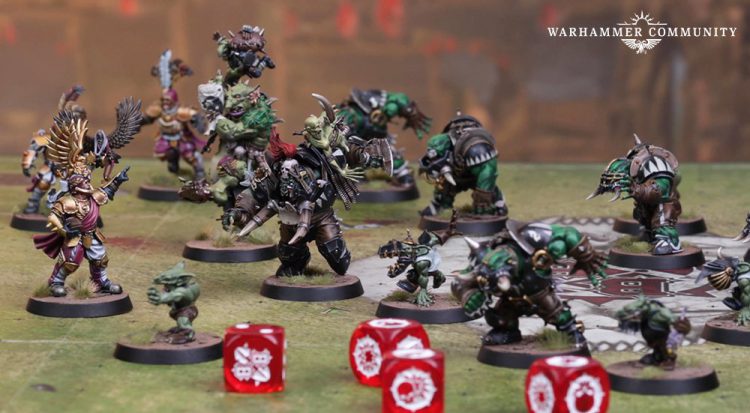
Black orcs are larger, meaner, and more disciplined than their “regular” cousins. The “black” moniker doesn’t have to have anything to do with their appearance, but more with their demeanor and focus on causing as much pain as possible to their opponents. A brand-new team for this season of Blood Bowl, Black orcs combine the raw strength and toughness of the eponymous Black Orcs with Goblin Bruiser Linemen and a Trained Troll to make a layered team with both power and agility. The team’s brand-new with this edition, so we can’t fully speculate on how good they are, yet, but they look like they’re going to be awfully good on the pitch!
Chaos Chosen Teams
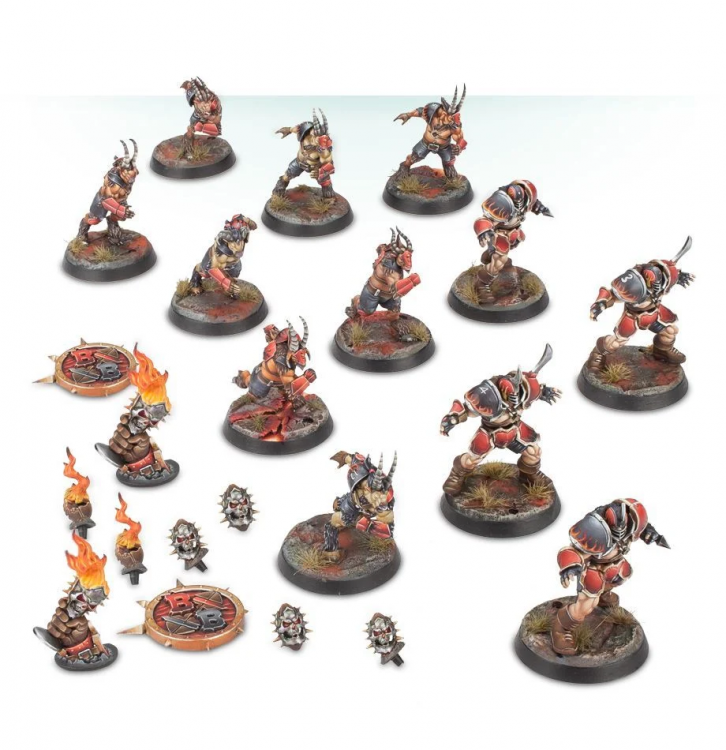
Have you ever thought, “Yo, Blood Bowl is cool and all, but who cares about the ball? I only want to BUST HEADS!” If so, Then Chaos Chosen may be the team for you! With nary a ball-handling skill in sight, Chaos Chosen excel in one area only: completely destroying the other team. Of course, they can level up to get ball skills and play the game to win and stuff, but why, when the other team is all dead? With plenty of high-strength and high-armor players, Chaos teams can both dish out the hurt and take it right back. Just don’t ask them to actually pick up the ball.
Chaos Renegade Teams
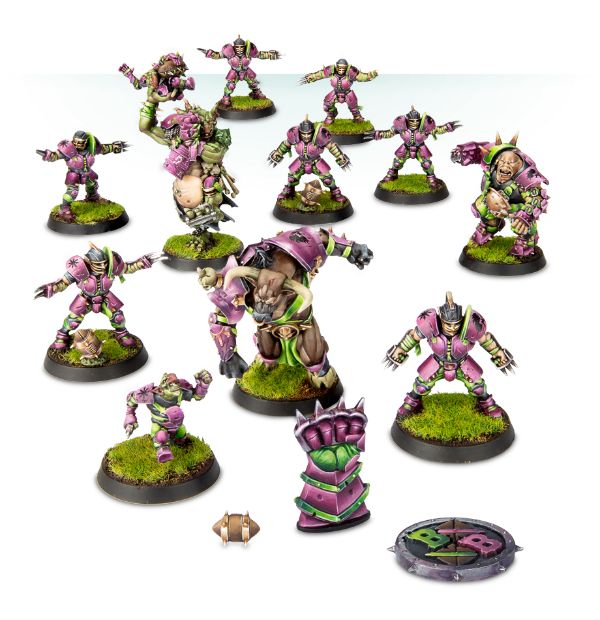
Our first “alliance” team, Chaos Renegades draw from evil Humans, Goblins, Orcs, Skaven, and Dark Elves. New coaches be warned: there is no box for this team! You’d have to cobble together your team from leftover minis of other teams. That being said, Renegades can include up to 3 Big Guys from a list of 4: Trolls, Ogres, Minotaurs, or Rat Ogres. They’re the only team that can go that big from the jump, so watch out! The rest of the team suffers from animosity and a general lack of skills, making this team better for more experienced Blood Bowl coaches.
Dark Elf Teams
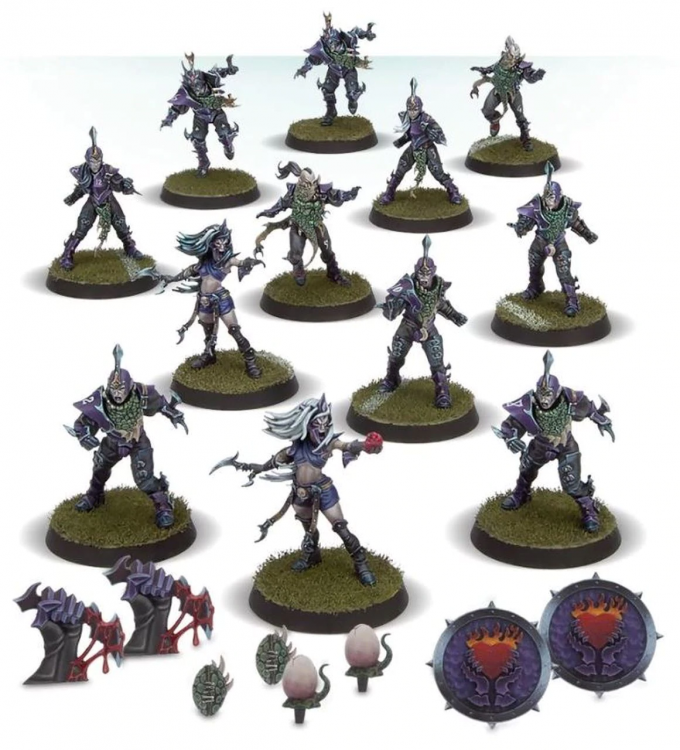
Dark Elf teams venerate the running game above all, and they’re just about the best in the biz when it comes to dashing and gashing their way to victory. Where other Elven teams tend to be a bit squishy, Dark Elves show up with good armor and some very hard-hitting skill players. They’re fast, tough, and are easily one of the best teams in the game. Treat your Dark Elves with respect, though, as they’re some of the most expensive players out there, and losing a few early can spell doom for a burgeoning Dark Elf team.
Dwarf Teams
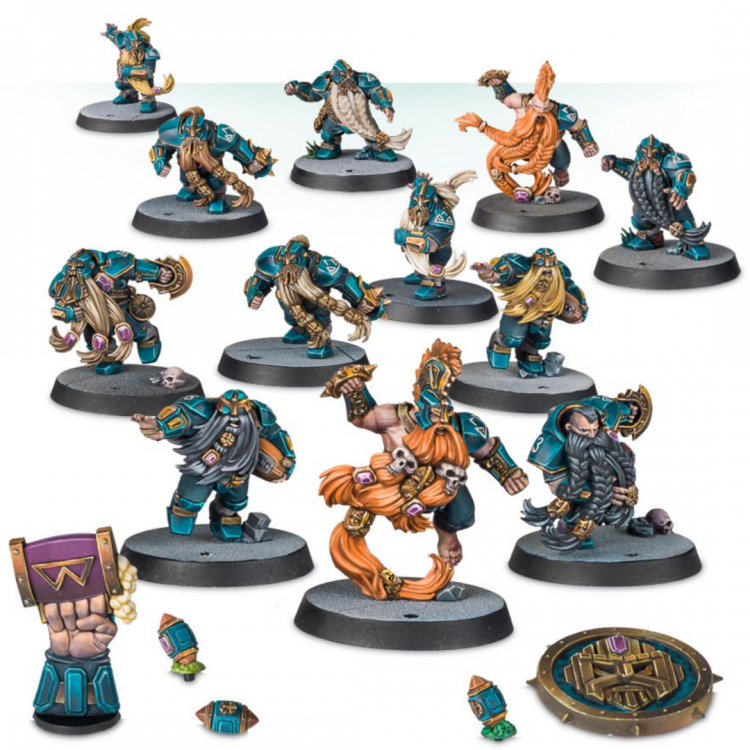
As everybody knows, Dwarves are methodical and dour in their approach to everything. Dwarf Teams in Blood Bowl are no different. They are heavily armoured and extremely competent at fighting, but they severely lack in the speed department! A Dwarf Team lives and dies by its careful positioning and making use of every square of movement available to them, because they really don’t have much! Lightly-armoured teams suffer a lot of violence at the hands of the Dwarves!
Elven Union Teams
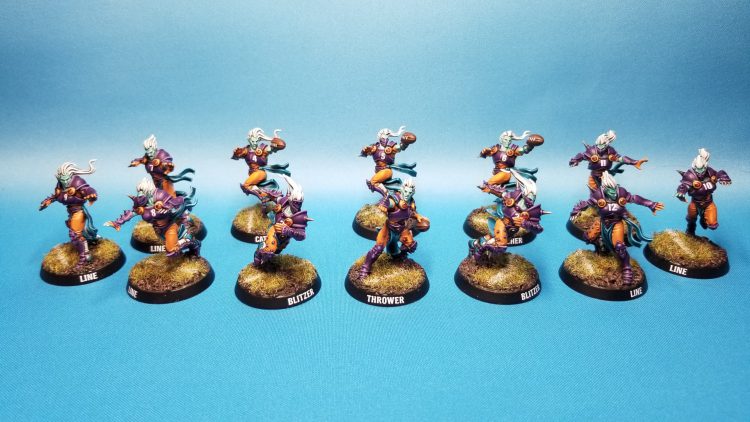
Simultaneously the most elite and the most plentiful, the Elven Union lineup is a tricksy blend of speed and skill with competent, relatively cheap linemen. They excel at the running and passing games, with a lot of unique starting skills on their positional players, but they have very weak armor overall and will get pummelled in a protracted fist-fight. Score fast, score early, and learn how to cause turnovers, because this team needs to be on the ball in order to survive.
Goblin Teams
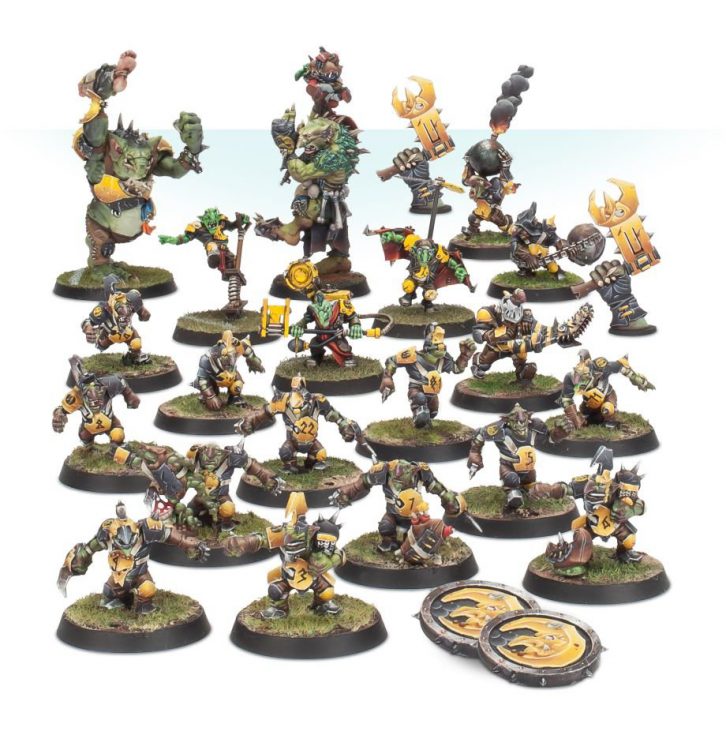
Unparalleled cheaters and dastardly rule-benders, Goblin teams bring a frankly staggering amount of unique players, rules, and tactics to the Blood Bowl pitch. This makes them a tricky team for a new player, not only because all their special rules can be confusing, but also because as a Stunty team, they are one of the worst teams in all of Blood Bowl! They have a ludicrous capacity for violence, however whether that is inflicted on their opposition or on themselves is often decided by little more than a coin toss! Matches involving Goblins are always fun to watch, and always fun to play, but don’t expect them to win very often…
Halfling Teams

Halfings are absolutely terrible at Blood Bowl. They are, in fact, the worst second worst team in the game! Halflings enjoyed a number of quite interesting upgrades late in the release cycle of BB2016, and some particularly talented or lucky coaches have piloted them to great success, but their combination of poor speed, terrible armor, and almost total lack of ability to hit opponents or throw the ball makes for an entertainingly pathetic spectacle. Halflings are another team that are always fun to watch, and usually fun to play, but definitely will not be lifting many trophies.
Human Teams
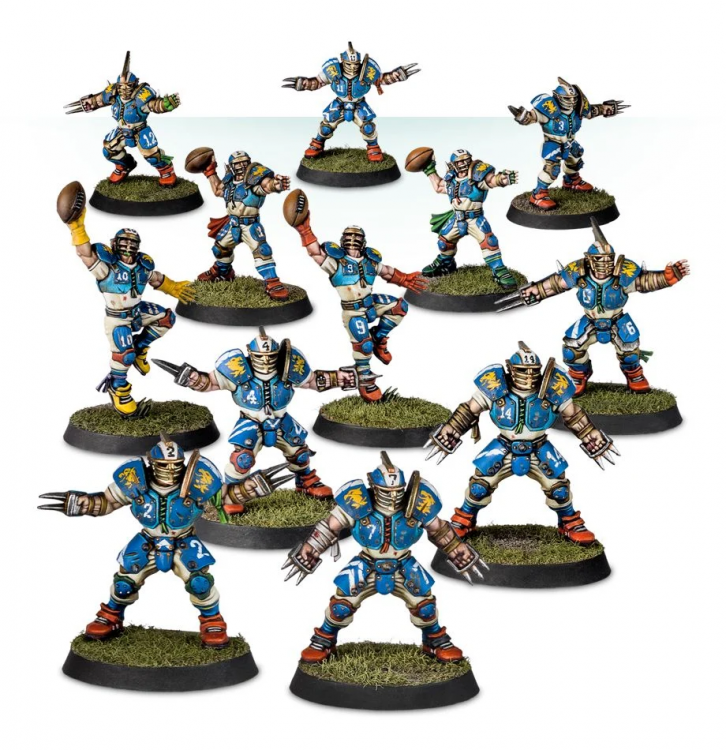
Humans are extremely solid all-round players of Blood Bowl. This would in many other games make them an obvious choice for a new coach, however in a game filled with such varied playstyles, Humans actually require a lot of nuance to play well. Their strength lies in being able to outmatch almost any other team’s weakness. They will out-bash fast teams and outrun slow teams, and a skilled Human coach understands the tactics required for each. They are a rewarding team to master, and will teach you a lot about the game overall.
Imperial Nobility Teams
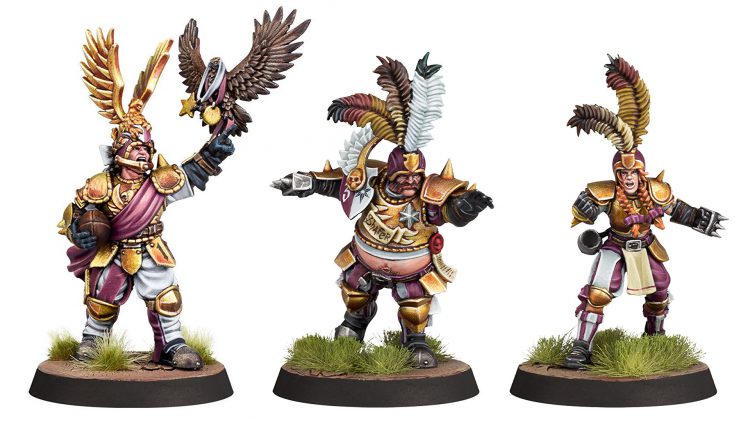
One of the newest teams to Blood Bowl, Imperial Nobility are as yet untested by the community at large. They appear to be a new twist on the old, unofficial Bretonnian Team roster, which employed highly skilled fast moving players supported by a line of hard-to-shift strong ones, all screened with unremarkable – but highly annoying, due to possessing the Fend skill – linemen. They have had their starting skills and availability of positionals tweaked, and they’ve gained the muscle of an Ogre, which their Bretonnian ancestors did not have. Expect to see a team that fights a tough battle for board control before opening a path for their fast Noble Blitzers to charge through.
Lizardmen Teams
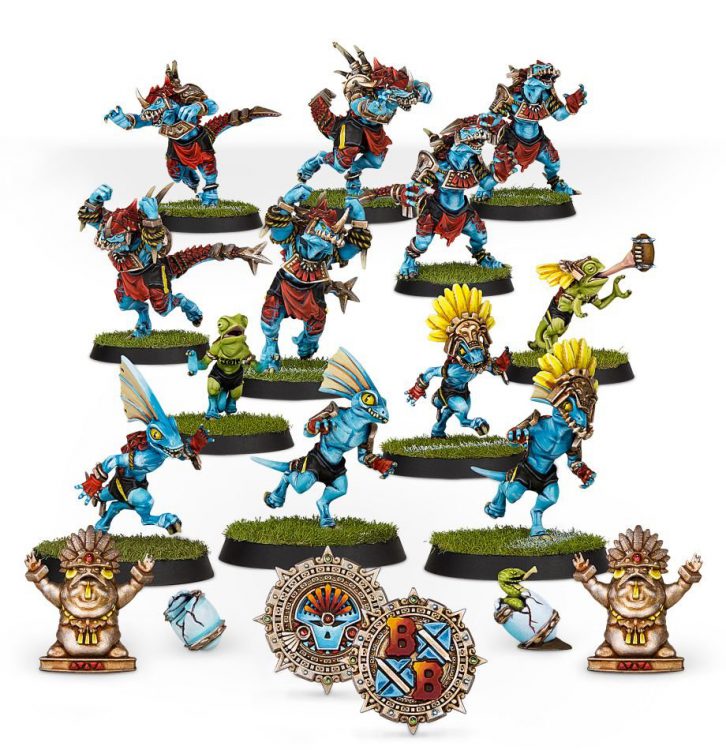
Dinosaurs in football pads – most coaches don’t need to hear more than that before deciding whether Lizardmen are the team for them or not. To describe the team with a bit more nuance, Lizardmen possess some outstanding highly specialised players, each of which is absolutely terrible at doing anything they aren’t specialised to do. Their solid line of up to seven high strength and high armour players screens a handful of tiny, vulnerable, but very fast little ones. If your Saurus and Kroxigor can hold the line and prevent your opponent from getting through and battering the Skinks, then you’re on track for a good win, because not much else can stop this team from dominating the pitch, especially once they have a few skills under their scales.
Necromantic Horror Teams

Necromantic teams offer a twist on the classic Undead lineup. They have more potential for speed and a slightly reduced potential for violence, but do not mistake them for being a soft touch. They got an updated roster with the BB2020 version of this team, switching out the steadfast Wights for Wraiths, who enjoy a tricksier set of skills at the expense of losing the ability to play the ball at all. Overall the changes to this team are modest, which means that Necromantic Horror teams are on track for being a solid all-round starting team with a lot of interesting potential in their development.
Nurgle Teams

For those not in the know, Nurgle is the Chaos god of decay, stagnation, and plague. What does that mean for his favored teams? They’re slow, strong, and tougher than anyone on the pitch! In classic Chaos fashion, Nurgle teams come with no ball-handling skills at all, instead focusing on meting out punishment and standing tall against the other team. New coaches should expect a team that plays hard, disrupts the opponent’s plans at passing, and goes the distance. Beware, though, Nurgle teams are just about the slowest in the game, so keep a careful eye on positioning, lest your opponents run right by you!
Ogre Teams
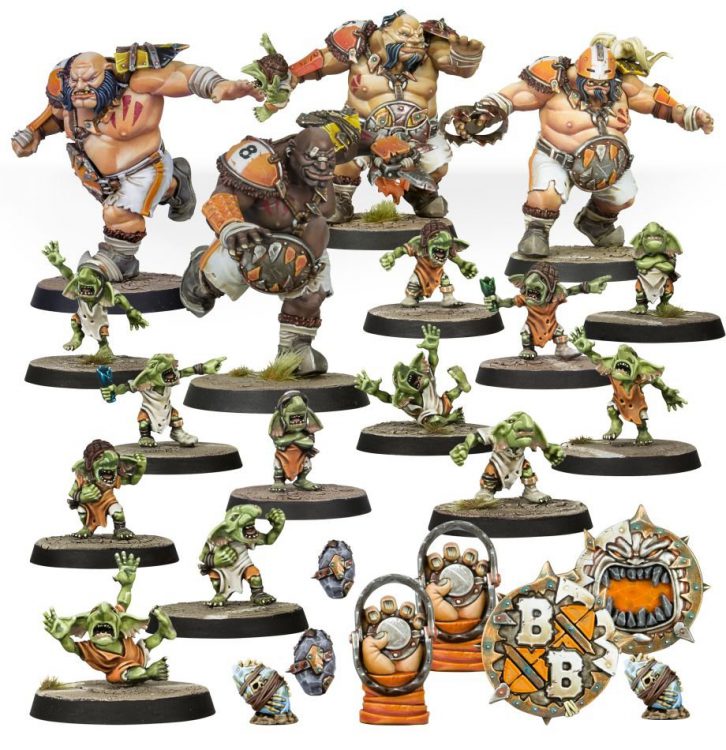
You’d think that a team made up of mostly Ogres would be a shoe-in for best team in the game, but the truth is actually rather far afield from that. Ogres are incredibly stupid, and will fail to do anything at all 1/6th of the time. They’re also prohibitively expensive, meaning that Ogre coaches have to fill out the rest of their rosters with diminutive Gnoblar, who are amongst the worst players in the game. At least Gnoblar are cheap! That being said, Ogres are still a terrifying force on the pitch, and any smart coach will think twice about standing toe to toe against one.
Old World Alliance Teams

Just like how the Chaos Renegades Team is an amalgamation of evildoers, Old World Alliance teams are made up of the “good” races of the Old World. With access to Humans, Dwarves, Halflings, Ogres and Treemen, the Old World Alliance can adapt to any playstyle or challenge. New coaches beware, though! There is no box for this team, you’ll have to make one up from the Human, Dwarf, and Halfling boxes yourself, and that could be quite the project. However, because of all the versatility built in to this team, they’re definitely one of the strongest out there.
Orc Teams

Orcs are big, mean, and violent, and that makes them perfect Blood Bowl players! While not the fastest team around, Orcs are tough, strong, and come with enough skills to make them competitive from the word “go”. Their Blitzers are amongst the best in the game, and they can even take a smattering of Goblins and Trolls to help them make up for their deficiencies. Orcs tend to be on the slower side of the ball, though, and while they’re one of the easiest and most forgiving teams to coach, they still need a careful eye to positioning.
Shambling Undead Teams
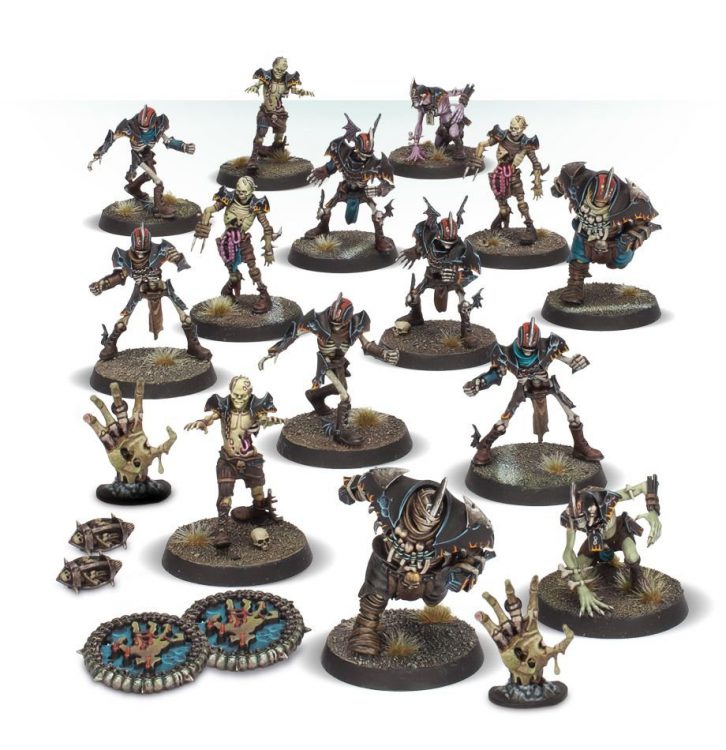
These classic Undead teams hit hard, move fast, and have the toughness to go the distance. Mummies are amongst the most fearsome Big Guys in the game, and Shambling teams back them up with speedy Ghouls and stalwart Wights. Also, Undead linemen are cheap and expendable, making them perfect “speed bump” players to babysit enemy Big Guys. This team is perfect for new coaches as it is one of the most forgiving teams on the market. Did we mention that an Undead team can get free Zombies if they kill an opposing player? Because they can, if we hadn’t already given you enough reason to pick one of these teams up.
Skaven Teams
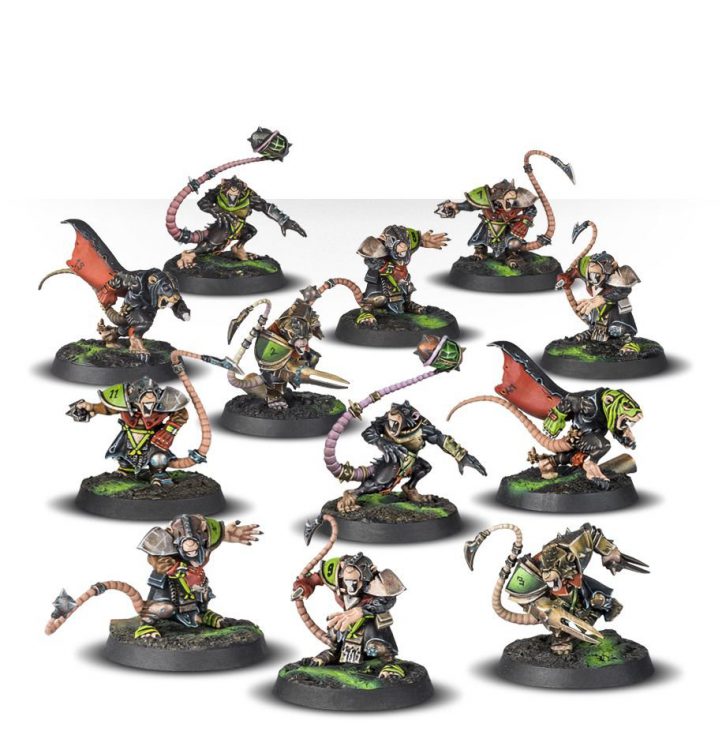
For the uninitiated, Skaven are underworld-dwelling ratmen. On the Blood Bowl pitch, they’re all about one thing, and one thing only: speed. Skaven can employ the fastest player in the game, the Gutter Runner, who, while fragile, outpaces even elves in a foot race! They can also round out their roster with the terrifying Rat Ogre, an enormous and murderous giant that only wants to smash the opposing team. Buyer beware, though, as Skaven teams are generally one of the squishiest teams around, so do not expect to have many rats still on the pitch at the end of the game. That’s ok, though, because Skaven can score quicker than anyone else! Score early and often with the ratmen, and it doesn’t matter how many you’ve got left at the end of the game!
Snotling Teams
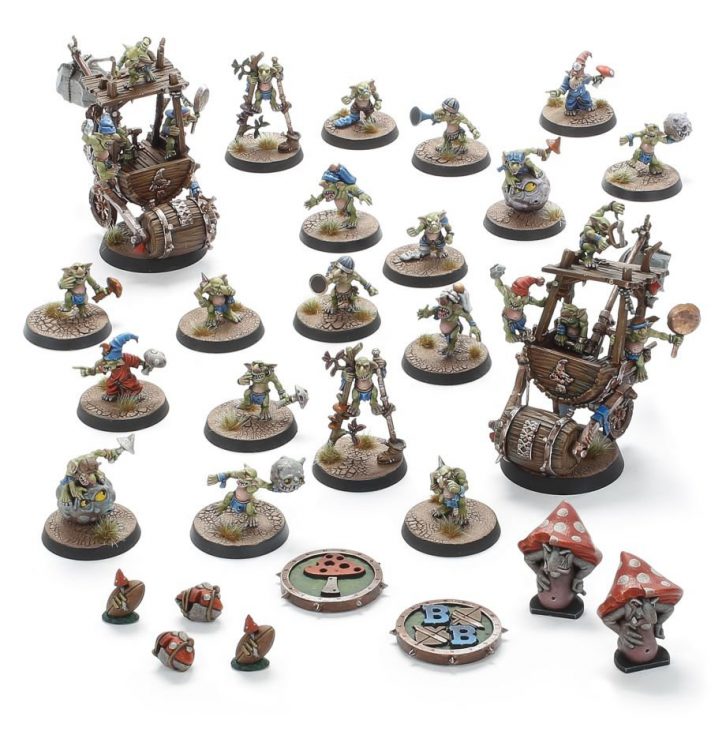
Snotlings are tiny, stupid, weak, and convinced of their own superiority. They are absolutely awful at Blood Bowl, but that doesn’t stop them from loving it! Much like Goblins, the allure of the Snotling team is not winning games, but causing as much mayhem as possible, much of it confined to their own team! While being a ton of fun, Snotlings are a poor choice for new coaches. Don’t expect to win many games or have many Snotlings standing at the end of a game, but do expect to have a blast while you play!
Underworld Denizens Teams
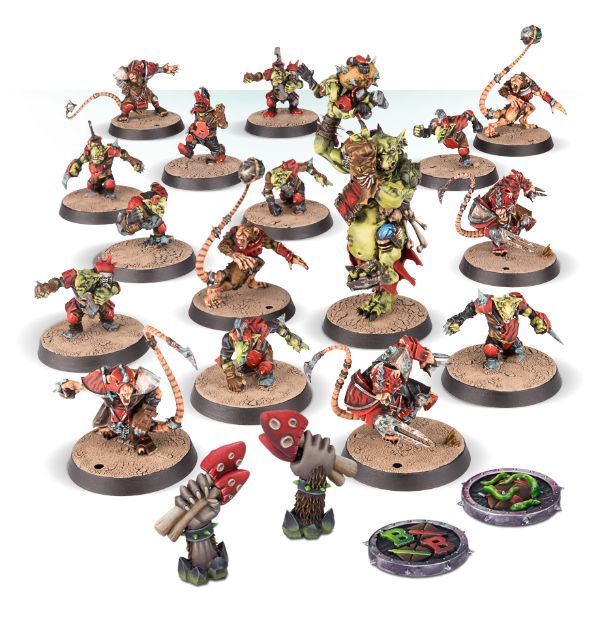
What do you get when you cross sneaky Goblins, Snotlings, and Skaven with Chaos-magic infused Warpstone? We don’t know, but it’s got green skin, dank fur, and a generous helping of mutations! The Underworld team is another melange of “evil” races, combining the speed of Skaven with the…general crappiness of Goblins and Snotlings. However, each player on an Underworld team has access to Mutation Skills meaning that while they might be diminutive and weak, they’re highly specialized and dangerous on the pitch! Note that like the other mixed-race teams, there is no box for an Underworld team, you’ll have to cobble one together from different boxes.
Wood Elf Teams
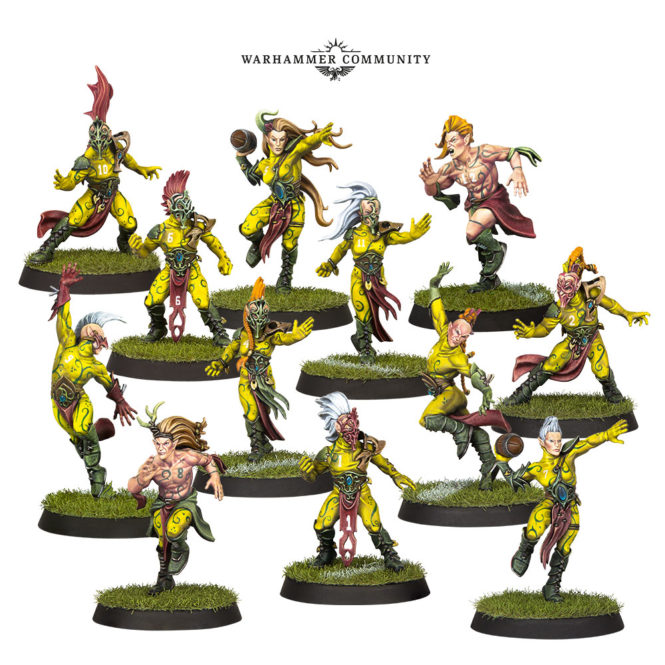
Finally, we come to Wood Elves. Generally despised by everyone except Wood Elf players, Wood Elves boast the absolute best players on the pitch (on any pitch): Wardancers. These devilishly effective Elves can leap over intervening linemen to get at the more important ball carrier behind them, all while avoiding any damage themselves. Wood Elves also boast some of the best throwers and catchers around, and can also take a treeman, if that wasn’t enough. Take heart, though, as Wood Elves manage to combine being both very expensive and easily injured, if you can knock them down, that is. Wood Elf players rarely care, though, as they’ll smugly point to the scoreboard with every injured elf.
Conclusion
There you have it, Sports Fans! Blood Bowl is Games Workshop’s most unique, longest running, and completely bonkers product on the market, and is well worth your time. In the coming days and months, we’ll be expanding our Blood Bowl coverage to include tactics, team spotlights, and even report on the leagues that our contributors are running. So, keep coming back to Goonhammer for all your Blood Bowl needs!
Thanks for reading, Sports Fans! If you’ve got any questions or comments, feel free to drop us a line over at contact@goonhammer.com and we’ll make sure you get the answers you’re looking for.
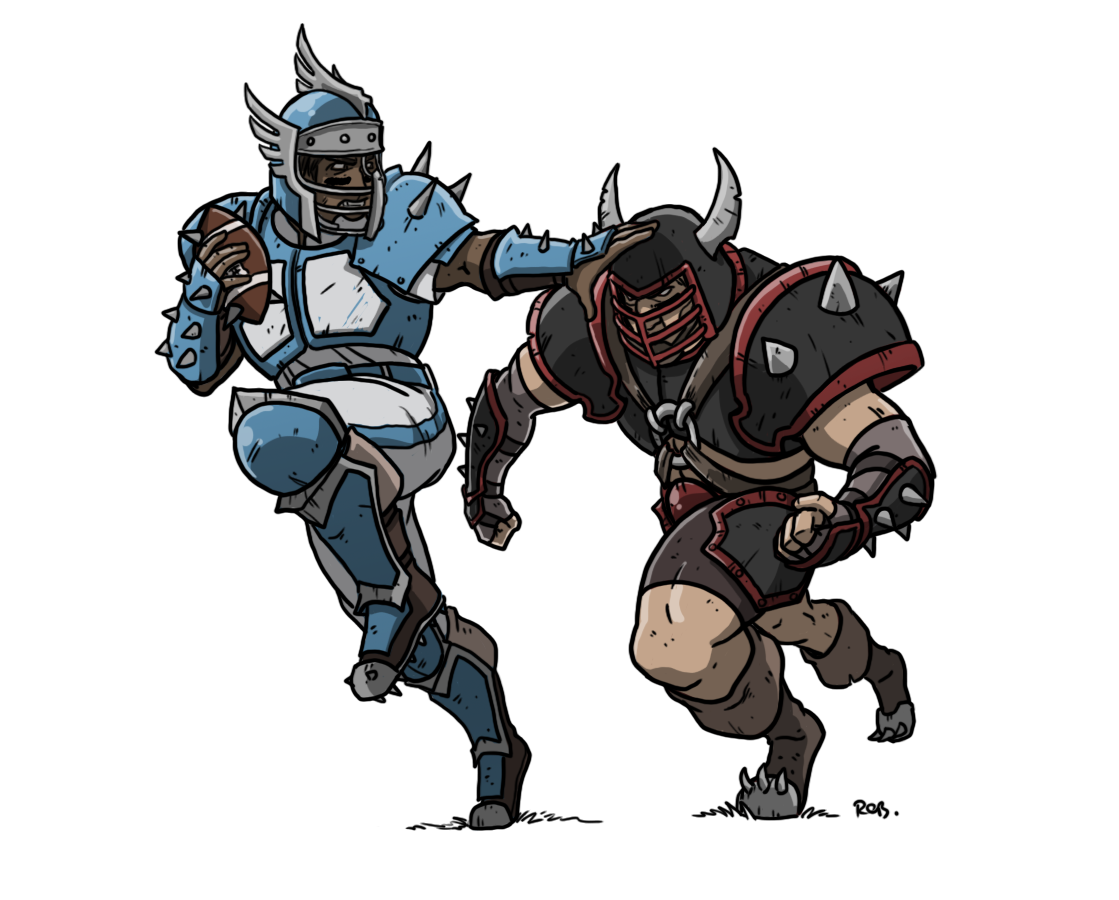


You must be logged in to post a comment.